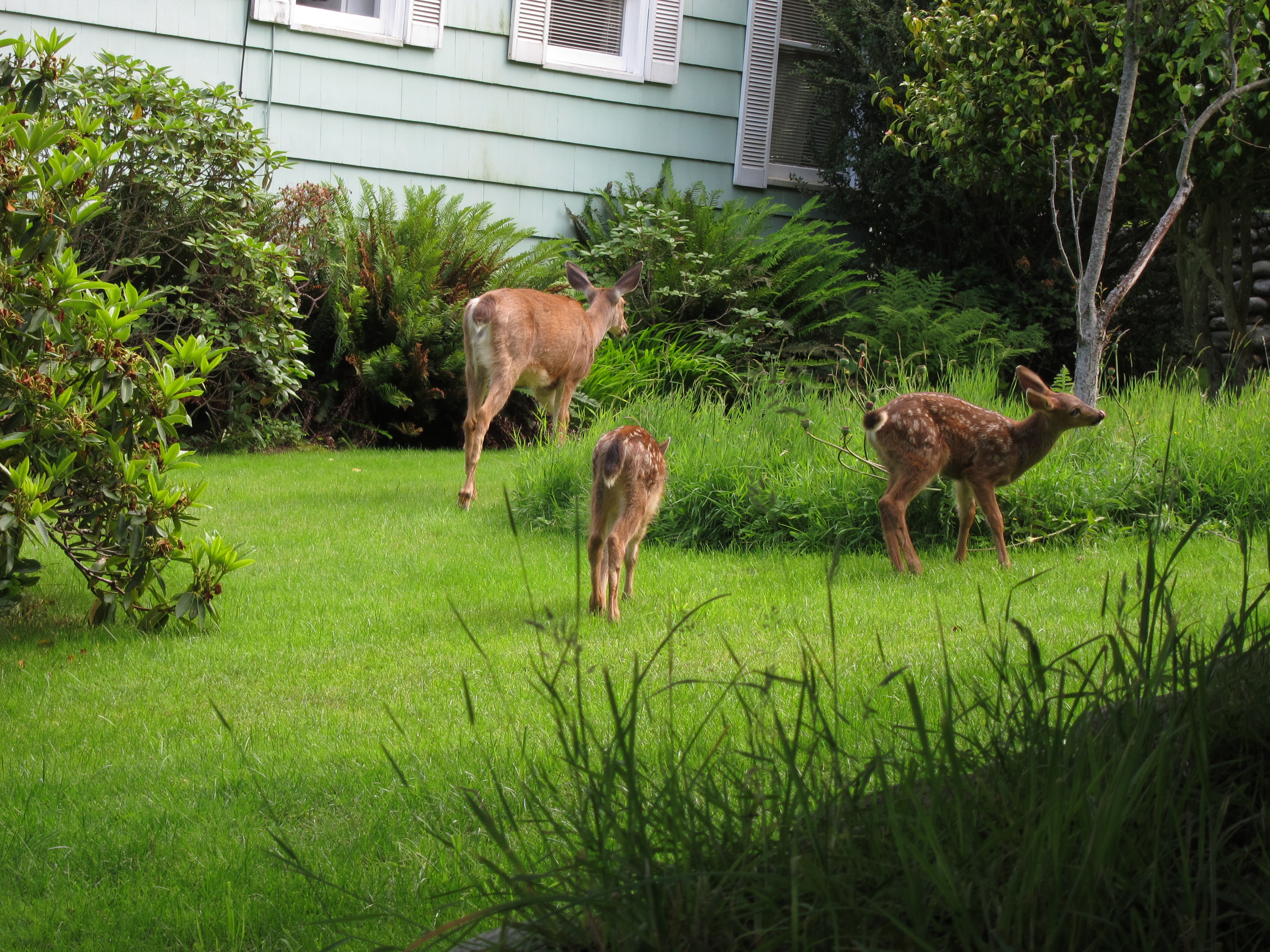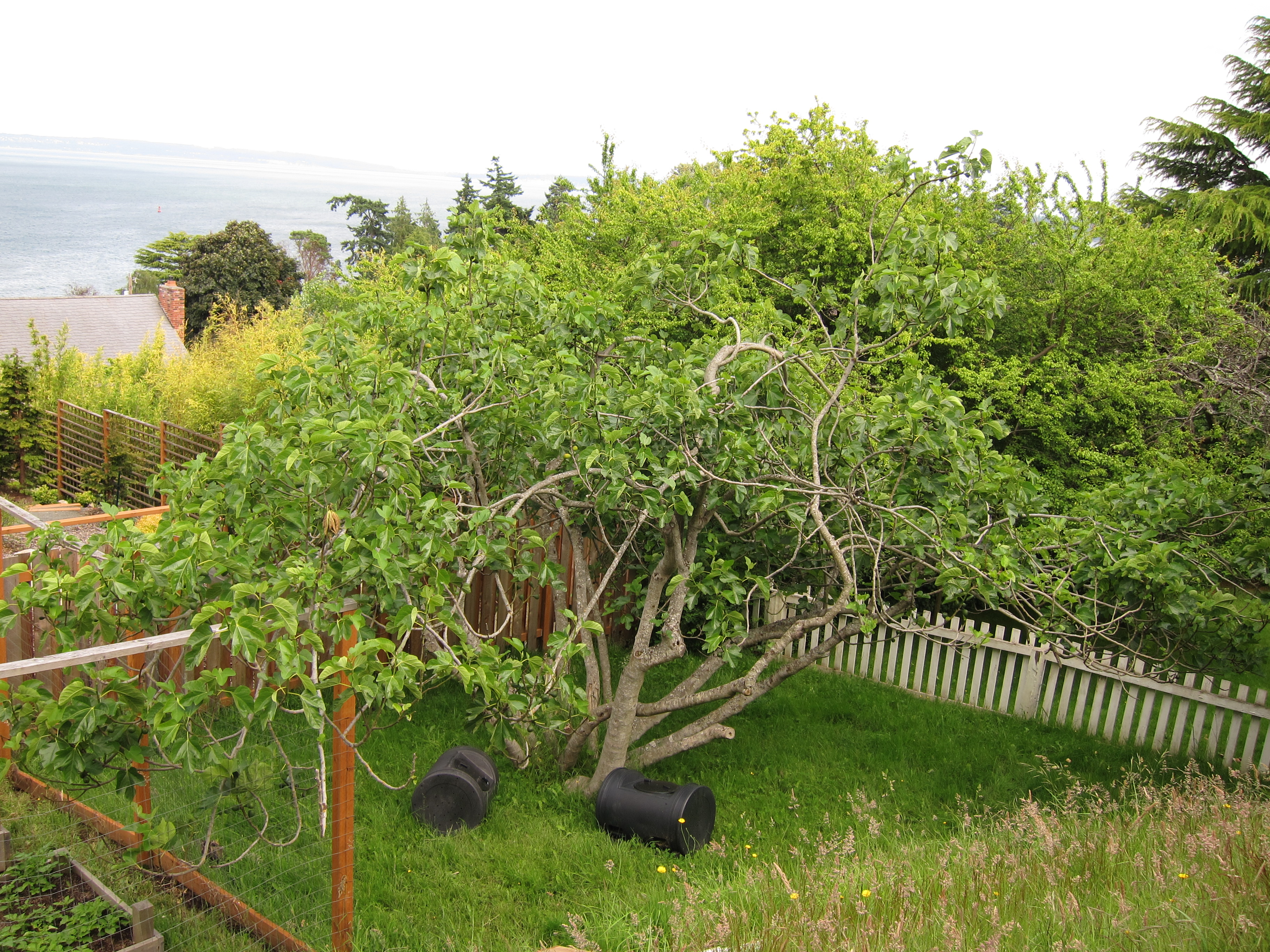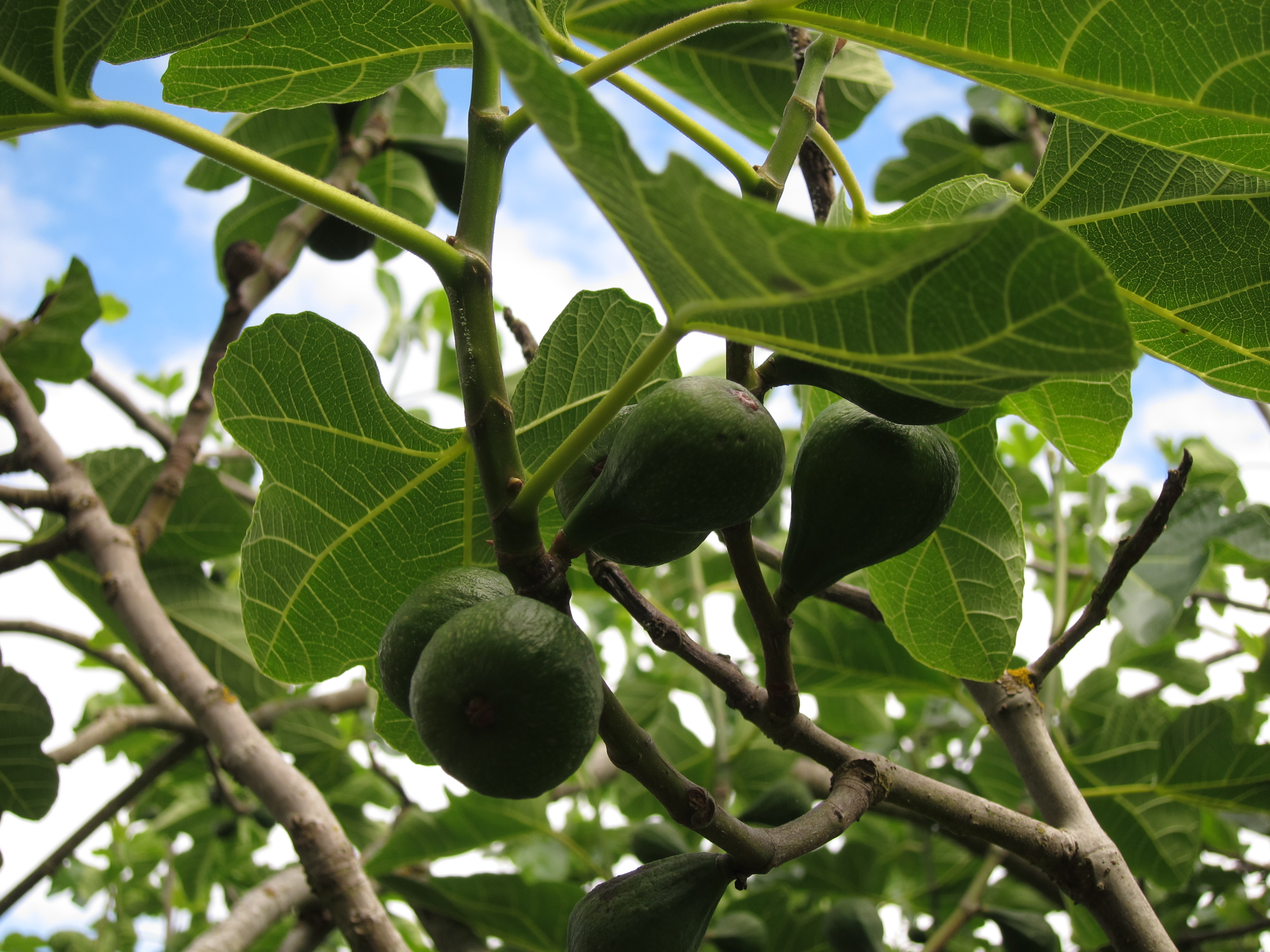
In my back yard, at the bottom of a slope, a fig tree stands, sprawling, with raw amputations of some of its branches, leaving rough, jagged stumps. Branches spill over the deer fence into the vegetable garden. Other branches crisscross each other in competitive fury. Unpruned, unguided, and unruly, the fig tree remained gnarled and bare as spring arrived. While flowers bloomed and cherry trees dazzled with vivid whites and soothing pinks, the fig tree showed no interest in joining the springtime fun.
I would ask local gardeners what they thought. “Do I have a dead tree?” or, “Is it normal to be dormant this late?” They would shrug their shoulders. “Wait and see,” they all said. I didn’t want to do that, of course. After decades of city and corporate life, I’m still sort of a Type-A girl. Still, when in Rome and all that. So I took a deep breath and waited, and tried not to worry about it.
Sure enough, at some point about the beginning of May, tiny shoots of green appeared, shy and tentative. I started picking off last year’s fruit, dried and withered from lack of interest. Unable to maneuver a lawn mower to that part of the yard, I worked the weed eater to cut the grass around the tree, thick with moisture from collecting run-off from the slope above it.
 The more I get to know the tree, the more I find myself hanging out underneath it. It fascinates me. I find myself patting a branch here and there, running a hand along places where bark is stripped, and I caress the rough, crude cuts. It is deeply wounded, and yet resilient, determined, audacious.
The more I get to know the tree, the more I find myself hanging out underneath it. It fascinates me. I find myself patting a branch here and there, running a hand along places where bark is stripped, and I caress the rough, crude cuts. It is deeply wounded, and yet resilient, determined, audacious.
As the leaves grow and multiply, new figs begin to form. A couple of raucous crows, uprooted from a damaged madrona tree that neighbors removed, have found a bare branch on which to perch and groom each other. “Welcome to your new home,” I tell them. “You’ll be safe here.” I am happy for the crows, and happy for myself.
The more I stand there, the more a vision arises. I see a Buddha in quiet repose under the tree. I see benches where I, and perhaps others, can sit in contemplation.
Inside the house, I visit my friend Google, which tells me that the bodhi tree, where the Buddha attained enlightenment, is a variety of fig. Of course, Adam and Eve made their first clothes from fig leaves, and fig trees show up in Egyptian, Greek, Roman, and Islamic stories and legends. There is something far more interesting going on here than the fig newton cookies of my youth.
I order a cookbook, Under the Fig Leaf by Sherri P. Lee, that tells me when and how to harvest the figs. While I wait for them to ripen, I am learning how to freeze them and dry them, and how to prepare them with meat, with salads, with desserts. There are even fig martinis! I have eaten only a handful of fresh figs in my lifetime, so I explore the mysteries in the hopes of using them, and not letting them die on their branches.

The deer who roam the city know this, too. A mama doe with her two fawns traverses the yard nearly every day. She has found a place to stand on a terrace wall, where she can reach a few of the branches. She has stripped one bare of all its leaves. On the other, she nibbles at leaves and bites at the not-yet-ripe fruit. These are for her, I decide. There is abundant fruit, with plenty to share with a hungry mama.
It would seem in a place like this, teeming with verdant fertility, one could spend a great deal of time. Perhaps it is a magic place, where one can let go of cares and worries and bring dreams into focus. The vision continues, and with it I hear the soft whisper of inspiration. “Add an entry,” it says, “and cover it with vines. Then circle the tree with a labyrinth…”
A labyrinth. Why not? I have already spent time here and know the power of this spot for meditation. I first walked a labyrinth years ago, when I, like the tree, was wounded and unruly. Since then I have walked labyrinths wherever possible, even at Chartres Cathedral in France, though my personal favorite to date is the outdoor labyrinth at the Kripalu Center in Western Massachusetts. Walking the labyrinth, we are told, shows us our life and ourselves. It is a powerful walking meditation.
I measure the area. Could it work? I see a narrow path lined with shade- and moisture-loving flowers and ground covers. I find statuary online: a Buddha, Quan Yin, and even the whimsical, like meditating frogs and cats. I weep with joy at the vision, even as I am bowled over by what it will take to create it. I start to calculate when to cover the grass in order to replace it; when to call an arborist to tend to the fig tree and begin to heal the abuse it has endured; how to create and build the labyrinth; what to plant; what to include.
Over the years I have learned to never question a vision. I consider it a requirement of my existence to bring a vision to the fore. It feels a little like “Field of Dreams” to me, except that I don’t have to risk losing the farm. It is that mystical pull to creation — the same thing that makes writing an absolute must, the same thing that somehow brought Henry and I here, to this town, to this home, to this new life. Under the fig tree, I follow the magic, the next spiraling steps, of my journey. Like a walk in the labyrinth, there is no goal, no end, no “there.” There is only the walk.
What a great idea, your own labyrinth. As for fig trees. When we moved into our current house we had a forest of fig trees. They were huge and unruly and I didn’t know what to do with them. They just didn’t have enough room to grow where they were. I cut them all down to make way for a flower garden. I know the neighbors had a fit (they told me later), and my husband still laments them. However, he has never been one to prune and tend a garden, and I didn’t want that particular job. And now… Read more »
That’s totally understandable, Julie. When you’re the one tending the garden, you get to make the decisions! Gardening, like writing and anything else, must conform to our own unique styles. I happen to love this fig tree, but I’d never foist them onto anyone else! Your yard sounds lovely.
Yes, echo Julie. And a wonderful backyard, which is inspiring all on it’s own. As for the vision, I learned, as we all do, never to doubt myself. When I started writing I listened to everyone (books and teachers) but my own voice. Glad that phase is over. Now, like you, I trust what I see. You have a wonderful inner eye, Nadine.
I, too, spent a long time listening too much to others. I should write a blog post about when and how I stopped parroting others and started following my own heart. While I like getting feedback from people I trust, I have to be true to myself, even if it means not following conventional wisdom.
Thank you for your kind words. They mean a lot.
Beautiful post, Nadine! I love your language as you describe the fig tree and your own yearnings towards it.
I think a labyrinth is a wonderful vision. I have yet to walk one, but I have that on my list of things to do.
I love the deer. We get a lot of deer visitors to your yard, and I love to watch them. I think they know they’re safe in the Barbour yard!
Thanks, Tina. I feel as though I’m being pulled into a new phase of life and am just getting a glimmer of what that means…though I’m sure that whatever it is, I’ll be blogging about it! The labyrinth seems to be one piece of the puzzle, so I’m eager to get to it. Our landscapers are going to rebuild my edible garden fences this week, and after that I can get started on it. I will handle this project on my own, because I think the process of making it is important, too.